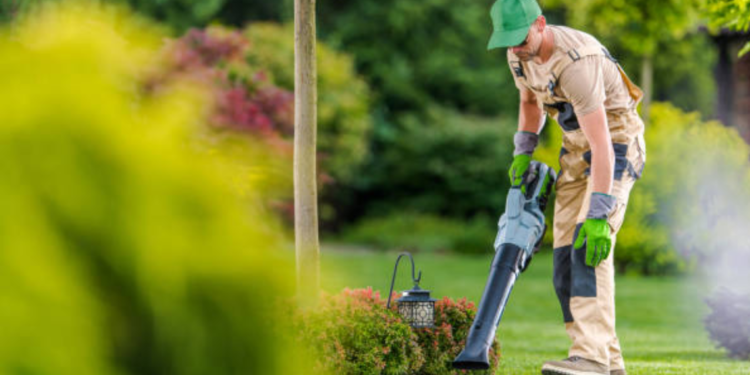In recent years, there has been a noticeable shift in the landscaping industry towards more sustainable and eco-friendly practices. One of the significant contributors to this change is the increasing popularity of electric leaf blowers. As communities and individuals become more environmentally conscious, the electric leaf blower has emerged as a versatile and efficient tool for maintaining outdoor spaces. This article delves into the key aspects of electric leaf blowers, exploring their benefits, functionality, and their impact on the environment. Easily and quickly take care of yard work using a leaf blower without cords. With this technology, you can effectively clear debris from your driveway and the backyard. This eliminates the need for stumbling over cords or connecting extension cords to reach areas that are harder to access.
Battery-powered leaf blowers with a lasting battery can maintain a steady power output of up to 82 volts. They have a longer lifespan, which means you can complete your work without interruption for a recharge. Furthermore, some models come with batteries that can be charged while you work using the extra battery. Visit on Snapfresh Tools for more information.
Advantages of Electric Leaf Blowers:
Electric leaf blowers come with a myriad of advantages that make them an appealing choice for homeowners and landscaping professionals alike. Firstly, they are significantly quieter compared to their gas-powered counterparts, reducing noise pollution in residential areas. This makes them ideal for use in communities where noise restrictions may be in place.
Secondly, electric leaf blowers are more lightweight and easier to handle, making them accessible to a broader range of users. This is particularly beneficial for homeowners who may not have the physical strength or experience to maneuver heavier gas-powered equipment. The ease of use also contributes to increased efficiency, allowing users to complete their yard work with less effort and in less time.
Another notable advantage of electric leaf blowers is their lower environmental impact. Unlike gas-powered models, electric blowers produce zero emissions during operation. This aligns with the growing emphasis on reducing carbon footprints and adopting cleaner technologies. Additionally, electric leaf blowers eliminate the need for fuel, reducing dependence on fossil fuels and contributing to overall sustainability.
Functionality and Versatility:
Electric leaf blowers are not only environmentally friendly but also highly functional and versatile. These devices typically come in corded and cordless models, providing users with options based on their specific needs and preferences.
Corded electric leaf blower is ideal for smaller yards and areas with easy access to power outlets. They offer continuous operation without the need to recharge batteries, making them a reliable choice for quick and efficient cleanup tasks. On the other hand, cordless electric leaf blowers run on rechargeable batteries, providing users with the freedom to move around without being restricted by power cords. This makes them suitable for larger properties or areas where access to electricity is limited.
Moreover, many electric leaf blowers feature variable speed settings and adjustable nozzles, allowing users to customize the airflow based on the task at hand. This adaptability makes electric leaf blowers suitable for a range of applications, from clearing leaves and debris on lawns to sweeping driveways and pathways.
Read Also: Learn how to Design a Landscape like a Pro
Overcoming Challenges and Limitations:
While electric leaf blower offers numerous benefits, it’s essential to acknowledge some challenges and limitations associated with their use. One common concern is the limited runtime of cordless models, which may require users to recharge the batteries during extended use. This limitation can be addressed by investing in additional batteries or opting for a corded model for longer tasks.
Additionally, the power output of electric leaf blowers may not match that of gas-powered counterparts, especially when dealing with heavy debris or wet leaves. However, advancements in technology have led to the development of more powerful electric models that can rival the performance of some gas-powered blowers.
The Future of Landscaping with Electric Leaf Blowers:
As the demand for sustainable landscaping practices continues to grow, the future of the industry appears to be closely tied to electric-powered equipment. Manufacturers are investing in research and development to enhance the power, efficiency, and battery life of electric leaf blowers. This ongoing innovation is likely to address current limitations and make electric models even more attractive to a broader audience.
Furthermore, the shift towards electric landscaping tools aligns with broader trends in the green technology sector. Governments and environmental organizations are promoting the adoption of eco-friendly practices, and electric leaf blowers represent a tangible and impactful way for individuals and businesses to contribute to these efforts.
Conclusion:
Embracing the Green Revolution in Landscaping
In conclusion, the rise of electric leaf blowers marks a significant step towards more sustainable and environmentally friendly landscaping practices. With their numerous advantages, including lower noise levels, ease of use, and minimal environmental impact, electric leaf blowers are becoming a staple in the toolkit of homeowners and landscaping professionals alike. As technology continues to advance, we can expect further improvements in performance and efficiency, solidifying electric leaf blowers as a key player in the future of landscaping.












